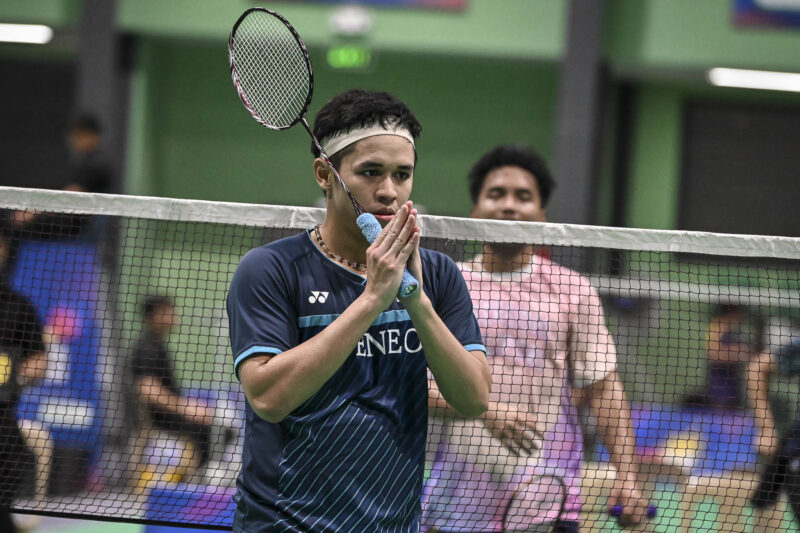The abused begin the road to rehabilitation as victims and finish as survivors. But what happens in between, and why do so few make the pilgrimage?
You lose hope the moment you enter the Bahay Pag-asa. We are regarded nonchalantly by a girl putting on make-up from the top bunk of her room. “Hello, ate!” children wave from another cell. Gray bars separate us. To the left, a youth lies on the floor of the isolation unit, staring into space. The sides of his mouth glisten with saliva.
A Department of Social Welfare and Development (DSWD) initiative, this local government facility is one of many satellite shelters for children in conflict with the law. In this particular center, only 44 of the 69 residents have criminal offenses. The rest are street children. One girl was sexually abused. They are here because the government has had to take custody of them.
As much as possible, it is only a temporary stay; DSWD refers them to non-government organizations that are better suited to handle specific cases, including victims of violence against women and children.
The bigger picture
As provided in Republic Act No. 9262, the Anti-Violence Against Women and Children Act of 2004, violence against women is any act or series of acts “that [results] in or is likely to result in physical, sexual, psychological harm or suffering, or economic abuse.” Examples are trafficking, prostitution, rape and incest, as well as related acts like threats, battery, assault, coercion, harassment and arbitrary deprivation of liberty.
The Philippine Commission on Women revealed that violence in 2013 saw a 50% increase from the previous year. DSWD also estimated that one in five women were abused in 2012.
After over 5,000 reported rape cases in 2013, a GMA News Online report approximated one reported rape incident every 96 minutes. These are only reported cases; actual occurrence is likely higher.
The same can be said of trafficking—1, 376 victims were listed in 2012. However, there were only 110 convictions of human-trafficking related crimes between 2005 and 2013.
Upon reporting, DSWD collects the victims; if their families are absent or deemed incapable of caring for them, they are taken under DSWD care and brought to the Bahay Pag-asa. Otherwise, says social worker Precious Santos*, they are again exposed to their perpetrators and the abuse is repeated.
Little hope
Santos works in only one of multiple Bahay Pag-asa facilities across the country. According to R.A. No. 10630 or the revised Juvenile Justice and Welfare Act of 2006, a Bahay Pag-asa is an institution that provides residential care for children in conflict with the law.
“Usually the kids are [from] horrible places… but it doesn’t mean that they’re going to a much, much better place,” shares Nico Rollan, incoming advocacy director of Tugon Ateneo, after visiting the area.
Despite the overcrowding, basic needs—food, water and shelter—are met. However, Santos says that they do not have a therapist.
Rollan also noticed that the children had no activities or modules for rehabilitation. “What it’s supposed to be is a rehabilitation center, and it’s not,” he said. “It’s just a place you keep the kids [in] until their hearing and their sentence, then they leave.”
The facility holds a violation in infrastructure as well. “Kasi ang Bahay Pag-asa, dapat hindi siya nakarehas (The Bahay Pag-asa should not have bars),” Santos says. “Bahay lang talaga siya dapat… Hindi kami sumunod sa standard ng DSWD (It’s really supposed to be a house… We didn’t follow DSWD standards).”
R.A. No. 9344, the precedent for the aforementioned act, protects juveniles from the deprivation of their liberty, which includes “any form of detention or imprisonment.” Many rehabilitation centers are former police stations or jails; the architecture was not changed during the conversion of the facility.
Despite this, Santos says that there seems to have been no sanctions from higher offices, and subsequently, no plans for renovation. She attributes the lack of urgency to a view of these children as menaces to society, and the fact that these children are not voters. The state forgets that some of the innocent also find their way here.
Staying silent
“A lot of times, when young people are pursuing cases or trying to defend themselves, they are going against the system instead of working with the system,” says Rachel Mims, Peace Corps volunteer working with End Child Prostitution, Child Pornography, and Trafficking of Children for Sexual Purposes (Ecpat).
“You shouldn’t have to talk to 10 different people about what happened to you, and why you’re trying to do your case,” Mims said, stating the need for the government to be more sensitive in handling abuse cases.
Ecpat counselor Mae Radam shares that it takes a long time for cases to progress. Hearings get rescheduled constantly, and cases can take up to three or four years before they are settled. While the delay may be attributed to bureaucracy, oftentimes the victims also decide to drop charges. Radam shares that dropping charges happens often, especially when a foreigner commits the act—families are sometimes paid to stay silent.
Santos adds other reasons for keeping mum include financial dependency and the resistance to a broken family. Dropping charges is also a large factor in the lack of success of cases.
As a social worker, Santos admits that she feels irritated when cases get withdrawn. “All your effort, all you have spent not only on paper and money, but on time, and they just withdraw,” she says in mixed English and Filipino.
Social workers wait on both the court’s decisions and the victims’ readiness to respond. They take care of the explanation of rights, escorting victims to medical check-ups, preparing paperwork and conducting follow-ups.
However, Santos notes that withdrawal may also have to do with the family orientation in Filipino culture. She cited a case where a child filed for incest against her father, with whom her whole family sided. Her mother told the child to take pity on her father—he had already gotten thin due to poor prison food. “’Pag nasa court na, ayaw na niyang magsalita. Umiiyak nalang siya (In court, she doesn’t want to speak anymore. She just cries),” recounts Santos.
In these cases, the government has to rely on a Barangay Protection Order that seeks to protect the victim, but does not ensure that the perpetrator is jailed. Younger victims may either stay with relatives or be taken under DSWD, then non-governmental organization (NGO) care. Relocating children from a Bahay Pag-asa to an institution involves paperwork; however, there is no complete directory of NGO shelters to partner with, and some are overcrowded.
House visits
The Ecpat shelter doubles as an office and a house. Rollan, outgoing Tugon deputy of the area, shares that the major difference between government and non-government shelters is the attention to detail. Here, they have a counselor, access to school and are even granted job opportunities.
With a living room, kitchen, and quarters for the girls, it can house 30 residents. At the time of the visit, there are only nine.
They meet us at the door, offering hugs to the guests. “Kung may mga volunteer, talagang ine-entertain ko kasi naramdaman ko kung paano ‘yong ma-OP, ‘yong hindi ka mapansin, na-reject ka, gano’n (I really entertain volunteers because I know what it is like to feel out of place, disregarded, rejected),” said 17-year-old Yvonne*.
We are not allowed to ask about their past, but they sometimes hint at it. “Minsan malungkot kasi maaalala mo ‘yong past mo, ‘yong nakaraan na, ‘yong ayaw mo na talagang balikan (Sometimes it’s sad because you remember your past, and you don’t want to go back to it),” said Sasha*, who is 12. “Pero masaya pa rin ako kasi napunta ako dito, tsaka may opportunity rin akong makapag-aral nang mabuti (But I’m also happy that I came here, and I have an opportunity to study well).” She talks about her hometown, and how she used to play the lyre in the school band.
“They’re all so sweet… Sometimes you forget that they’re abused and abandoned,” says Rollan. “I think people don’t really know this issue because they don’t want to talk about it, because it’s so uncomfortable… How I see abuse and abandonment—it’s not [for] the rich, the poor. It’s just people doing things to people.”
Breaking the cycle
“It happens everywhere, it’s a problem everywhere, it’s not a Filipino problem, it’s a human problem,” says Mims. “It just looks different in different parts of the world.”
When asked about how one can change people’s perception of abuse, Rollan says, “I really, really don’t know… but you do what you can. But to really, really change people—it has to be personal.”
The girls seem to agree. Their oldest, Useung*, is on the way to becoming a teacher. Yvonne is already training as a hairdresser, and intends to take up either psychology or social work. “Because they’ve helped me too,” she says.
Sasha declares with conviction that she wants to become a lawyer. One of the other girls cut in, “Sabi niya gusto niya daw maging lawyer para mapagtanggol niya kami (She said she wants to become a lawyer so she can protect us)!”
“Kasi pag meron ka nang karanasan, mas maipagtatanggol mo yong isang bagay (Because if you have a personal experience, you can fight for something more),” Sasha adds.
*Names have been changed to protect the sources’ identities.




